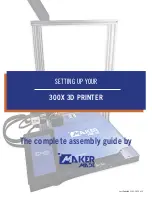
2
2-3
Understanding calibration
Understanding calibration
Although the default calibration set meets most users’ needs, the EX7750 allows you
to choose a calibration set to customize calibration for specialized jobs.
Calibration allows you to:
• Maximize the color reproduction capabilities of the EX7750.
• Ensure consistent color quality over time.
• Produce consistent output across EX7750 servers.
• Achieve better color matches when reproducing
, such as PANTONE
colors or other
• Optimize the EX7750 for using ColorWise rendering styles (CRDs) and CMYK
simulations, and for using ICC profiles.
How calibration works
Success in obtaining satisfactory print quality from the EX7750 depends on many
factors. Among the most important are establishing and maintaining optimal toner
densities. The
is the measure of the light absorbed by a surface. By carefully
regulating toner densities, you obtain consistent printed color.
Even with a calibrated system, toner density is affected by service settings, humidity,
and temperature. Density also tends to drift over time. Regular measurement detects
day-to-day variations in densities, and calibration corrects for them.
Calibration works by creating calibration curves on the EX7750 that compensate
for the difference between actual (measured) and desired (target) density values.
These calibration curves are the graphic equivalent of transfer functions, which are
mathematical descriptions of changes that will be made to the initial data. Transfer
functions are often graphed as input or output curves.
The EX7750 generates calibration curves after comparing measured values to the final
target values for each of the four toner colors. The target values are based on the output
profile you specify.
Summary of Contents for Phaser EX7750
Page 1: ...OLOR UIDE...
Page 8: ...This page is intentionally blank...
Page 12: ...This page is intentionally blank...
Page 16: ...This page is intentionally blank...
Page 40: ...This page is intentionally blank...
Page 64: ...This page is intentionally blank...
Page 116: ...This page is intentionally blank...
Page 120: ...This page is intentionally blank...
















































